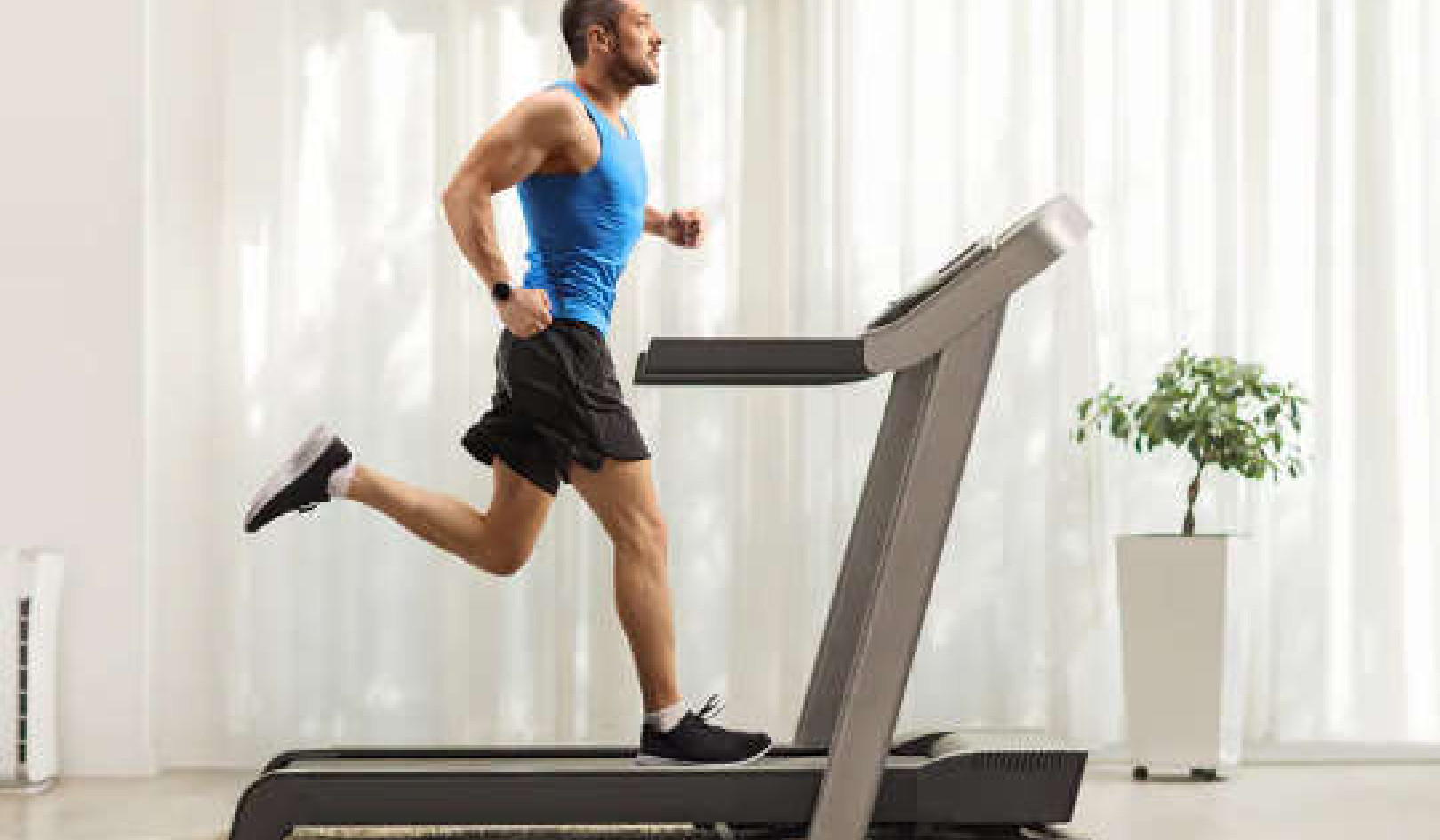
Image by shanblan4
I remember the first time I correlated dog training with the concept of violence. I had been studying yoga in India and had not trained dogs in quite a while. One day the next door neighbors adopted a new puppy, which they named Raju. They put her in the backyard where she began to bark and whine incessantly. Periodically the husband or wife would poke a head out the back door and scream at the pup to shut up. When the barking and whining continued, they would charge out the door and jerk her on the leash. Raju would eventually stop and they would go back inside, slamming the door in frustration behind them. Soon the whole noisy cycle of barking, yelling, jerking the leash, and going in and out of the house began again, with both dog and human emotions escalating in intensity.
A few days passed and I finally decided enough was enough. The poor puppy’s barking was quickly becoming a neighborhood noise nuisance. I felt compassion for the animal as well as the humans involved. It seemed time to put my experience as a dog trainer to good use. In addition, it occurred to me that several aspects of my yoga studies might be used to help in this situation. After all, there are many similarities between the learning principles that work for humans and those that work for dogs.
So I went next door and talked to the family. I explained that the puppy was barking because she didn’t have anything else to do and pointed out that, as dogs are social animals, she needed companionship. I suggested they bring her into the house so she could be with the family. They did so and, lo and behold, with the addition of a few other socialization exercises and training tips, the barking decreased to a tolerable level. And, of course, both the puppy and her humans benefited from the budding familial bond.
It was a relatively easy process. A compassionate, nonviolent approach, along with the integration of some holistic perspectives, had benefited the puppy, her family, and, in fact, the whole neighborhood. I realized how different this episode was from the methods I had been taught long ago to get a dog to stop barking — such as yelling and threatening, pounding on the cage, and jerking on the leash. In retrospect, some of the methods I had been taught, now seemed downright violent.
Get The Latest By Email
On my return to the United States, my brother Tom adopted a young dog from a shelter and asked for my help in training her. Her name was Thunder. In the first session with Thunder, I jerked her leash to get her attention. It was nothing serious — just a kind of “pay attention” pop on the leash. This sweet, sensitive animal put her ears back, turned her head, licked her lips, and did everything she could to say, “Okay, I submit. Please don’t do that again.” In a flash a shock ran through my body and a realization hit me. How quickly I had forgotten my experience in India. Without thinking, I had automatically used the primary method I had always used to “correct” a dog.
What was I doing? I suddenly knew that an animal could be harmed when the collar is jerked but also that, in a less overt way, I could even be harming myself in the process. A window had opened and common sense came rushing up through my awareness, “Duh — it was never necessary to jerk a leash to shape behavior, Paul.” Common sense just isn’t so “common” sometimes. In spite of having trained thousands of dogs and received numerous awards in competitive obedience, from that moment on, I irrevocably knew that the training methods I had always used were wrong for me.
That episode began a new journey. Thousands of people have come through my classes since then. In many cases they expressed the same relief I felt, to know there is another way — a nonviolent way — to get their dogs to do what they ask of them.
The good news is that non-aversive dog training is becoming more popular. However, it is estimated that only twenty percent of professional dog trainers in the United States teach strictly non-aversive methods of dog training. Most trainers use a combination of both aversive methods and reward-based methods. That means there are about forty million dogs in the country that are still being subjected to human violence as part of the training process. The point is, the majority of the population simply doesn’t know that nonviolent training methods are available.
Taking the Lead In A Gentle, Empowering Way
Nonviolent dog training allows you to create a partnership with your dog using gentle persuasion based in kindness, respect, and compassion. This gentle persuasion is what the nonviolent dog training is all about. In this method, you use gentleness with a flexible yet non-compromising attitude. The spoken word is actually full of power — and part of this power is based in the silence before, after, and between the spoken words.
Throughout history there have been many who have eloquently expressed the power of gentle persuasion, including St. Francis of Assisi, Mahatma Gandhi, and Martin Luther King, Jr. One of my favorite examples comes from the plant world. The famous botanist, Luther Burbank, was the first to develop a cactus without thorns. He told the great yogi Paramahansa Yogananda how he did it: “I often talked to the plants to create a vibration of love. ‘You have nothing to fear,’ I would tell them. ‘You don’t need your defensive thorns. I will protect you.’” [Yogananda, Paramahansa, Autobiography of a Yogi, Self Realization Fellowship, 1946, page 411.]
Nonviolence is not a new concept, but it is now taking root at a deeper level than ever before. Just as it is no longer acceptable to many people to punish a child by spanking, so, too, we are evolving as a species to eliminate violence in other arenas. For many years there has been a movement toward the use of nonviolent, “cruelty free” products — such as cosmetics that do not include animal products or involve animal testing. Now it is time to totally eliminate violence in the training of dogs and other animals.
Today many people are familiar with the concept of nonviolent animal training because of the success of the book The Man Who Listens to Horses, the best-selling biography of Monty Roberts. Roberts belongs to a lineage of animal trainers, going back to “horse whisperer” John Rarey in the mid-nineteenth century. Instead of “breaking” wild horses, these trainers use approaches in which the horse voluntarily decides to work with them.
Gentler, kinder, and less dominating methods of animal training have also been used for several decades to train dolphins, killer whales, elephants, and other animals. Karen Pyror was one of the pioneers in training marine mammals. Later, she incorporated nonviolent approaches in the training of other animals, including dogs, which she details in her groundbreaking book Don’t Shoot the Dog.
Pryor is one of a number of behaviorists who have shown us new ways to shape dog behaviors. A treat, a toy, or a scratch behind the ears, coupled with patience and consistency, and — voila — behavioral success. The point of my book, The Dog Whisperer, is that we humans have an equal role in the behavioral give and take equation. The fact that we can get a dog to sit or lie down when we ask is not the entire picture. In this philosophy, which is certainly not new, how we go about it is equally important. Our desire to elicit behavioral responses that correspond to our limited view of what is right, wrong, or simply appropriate, doesn’t justify violent methodology. The end never justifies the means. And might does not make right.
Responding Versus Reacting to Your Dog
Sometimes all that is necessary to tilt the scales toward nonviolence during training is simply to become aware of the obvious. A few years ago a couple called me to do a consultation for a dog that was exhibiting aggressive behavior. When I arrived at the home, Lucky was locked in the basement. I learned the wife was a psychiatrist and the husband was a psychologist. This couple knew more about operant and classical conditioning than I could ever hope to know in this lifetime. Yet, there I was setting up a behavior modification program for them and their dog, which was, in principle, similar to the ones they design and implement every day of the week for human beings! Fortunately, the light bulb went off in their heads and they quickly realized they had not been using their expertise with their own dog. They were able to implement my suggestions with great results. A few weeks later when I checked back, Lucky was well on her way to becoming a well-mannered member of society.
Like this couple, all of us have blocks in our awareness. It’s as if we sometimes forget to “connect the dots”. Often it’s just a matter of finding the trigger to release and remember what we already know. To do this, we have to pause before we act, and learn to respond rather than react. “Reacting” denotes an emotionally-based knee-jerk behavior to a particular situation. On the other hand, a “response” means we bring all of our wisdom, creativity, intuition, and emotion to the situation. Why learn to respond rather than react? For one thing, when you stop and consider what you are about to do with your dog, you are able to focus on how to deal with the problem rather than the symptom.
Let’s say a dog is barking at the mail carrier walking toward the house. The knee-jerk reaction is to respond to the symptom, which is the barking, rather than the cause. Most people never think about what is causing the dog to bark; he might be excited, he might be afraid, he might simply be saying hello. In essence, he perceives that he’s doing his job. In most cases, people deal with the barking by yelling at the dog, hitting him with a newspaper, or jerking him on the leash to get him to stop.
Regardless of the reason the dog was initially barking, he now associates the mail carrier walking toward him as a danger because of the bad things that happened to him when he barked at that person. So now the dog has a growing aggression problem towards people in uniforms walking towards the house. Imagine, on the other hand, if every time the mail carrier showed up and the dog started barking, you interrupted him with a phrase like “Who’s that” and then gave him treat. You will have ended the barking and the dog will have associated the mail carrier with something positive. So, by using this nonviolent, positive approach, you’ve stopped the barking and, in the process, you’ve made the dog more social.
Every dog deserves respect. And that respect includes being considerate. You should do your best to find out why a dog is doing what he is doing before responding. Otherwise, it is easy to inadvertently fly off the handle and react in a way that might harm the dog and actually compound the behavioral problem. Reacting blocks respect; responding fosters respect.
Consideration also includes the recognition that every dog learns at his or her own rate. People often ask me how long it takes to train a dog. The answer is — it takes as long as it takes. In many ways, training a dog is like raising a child. No parent would ever expect a child to learn to behave perfectly within three months or six months or even three years. Yet many people expect a dog to learn to sit or walk by their side reliably with just a few days’ training or after only a few sessions. It just doesn’t happen that way.
What Is Violence?
Everyone looks at the world differently. And we look at dogs differently. To many of us a dog is a loved, cherished being with her own distinct personality. Our dogs are members of our families and our partners in life. They teach us patience and love, and allow us to see these qualities reflected back when we look at them. Yes, to some, dogs are mirrors of our most exemplary human characteristics. Their presence increases our feelings of self-worth and help to heal us emotionally and physically. In their role as service dogs, they help us stand and see, both figuratively and literally. They tell us when the phone is ringing or when someone is at the door. They predict epileptic seizures and can even smell diseases — and so much more.
To others, a dog is an extension of machismo; if a dog is big, tough, and mean, it must mean that the dog’s owner is that way too. Finally, in some people’s eyes, dogs are simply possessions, which are disposable. Many people simply give up on dogs with behavior problems, such as eliminating in the house or excessive barking, and drop them off at the shelter. In the United States alone, desensitization, ignorance, and superstition are significant causes of more than four million dogs being put to death annually — not to mention the cruelty and the suffering of countless others.
People have dropped out of my classes because, as one guy put it, “I need to work with a more ‘hands-on’ approach.” Read “jerk and shake” in that comment. “He’s a rottweiler”, another guy said after literally punching his dog in the face. “He can take it.” I reported the man for this abuse. I felt sorry for the poor dog.
Violence is any behavior or thought that is harmful and stops growth — emotionally, physically, and mentally. Nonviolence is the opposite — any behavior or thought that promotes and fosters self-awareness, health, growth, and safety in these areas. All dogs are individuals with their own unique personalities just like us humans. And every situation in which the two of us interact is unique for that time and place. It is up to each one of us to determine what is violent, and what is not, at that moment in time. This holds true for behavior directed towards animals, the environment, and, as common sense dictates, ourselves. It takes lots of practice.
Here are some examples, a frame of mind, to clarify the differences, and help you draw the nonviolence/violence line in the sand. To interrupt a dog that is climbing on the dining room table or chewing an electric cord, you can distract him with sound and motion, and ask him to do something else. Can you see the difference between interrupting him and frightening him? In the same vein, you can encourage your dog to sit, or you can force and intimidate him by jerking, hitting, shocking, or shaking. You can create an environment so your dog learns by her successes, or you can punish him. Does that mean there is no anger in the training of dogs? Let’s face it, we’re human beings and anger is a human emotion. Every now and then, we humans get angry.
But there is a difference between ethical anger and violent anger. Ethical anger is anger in which emotion is expressed appropriately and with full awareness of the consequences of that expression. It means expressing oneself without causing harm. In its best expression, anger is a prod to positive change. Violent anger has no regard for consequence. At those rare times when you find yourself angry, reward-based dog training takes the violence out of that anger. This means that in no situation whatsoever do you ever harm your dog. And that takes awareness.
A nonviolent approach doesn’t victimize. It is a proactive approach in which the nonviolent principles of love, respect, and compassion are foremost in your mind. A nonviolent approach also means not taking on the role of a victim, although there are times when we must put ourselves in harm’s way to protect or care for a loved one or for a greater good. For example, Gandhi practiced what he called peaceful resistance in India’s struggle for independence. The point is, a commitment to nonviolence doesn’t preclude using our good old common sense, as well as wisdom, humor, and other nonaversive conflict resolution methods. We are the intelligent, compassionate, intuitive, creative species, are we not? Certainly we can figure out how to shape a dog’s behavior without the use of aversive methods.
Aversive training methods are not only harmful to animals; I believe they are at least part of the reason that animals sometimes exhibit violent behavior toward humans. According to recent statistics, there were 4.5 million dog bites in the United States last year, and 75 percent of the victims were children. In fact, dog bites are the leading cause of children being taken to the hospital.
The Cycle of Violence
So, why do people still continue to harm or threaten to harm their dogs? There are three major reasons: 1) it’s always been done this way, 2) the sense or need of the person to be in physical control of a situation, or 3) wanting to punish the dog. If a person is using aversive methods with a dog because “it’s always been done this way”, habituation and familiarity have set in. Changing things can be a threat to the status quo. To less secure individuals it also might mean that they would have to admit they had been violent in the past. This would be like looking in a mirror and seeing themselves as different from who they thought they were. Scary! The other reasons people continue to use harmful training methods — their need to be in physical control and wanting to punish the dog — are usually associated with anger and frustration. As I said earlier, anger has no place in dog training. It shuts off and restricts wisdom, creativity, and intuition. Both the person and the dog suffer. To quote from the Bhagavad Gita: “From unfulfilled desire comes frustration; from frustration, anger; from anger, ruin.”
The tendency to use domination techniques — violent force or the threat of force — is ingrained early in life. For example, whenever a child sees another person demonstrating dominating behavior, she learns that we “win” by being bigger, stronger, and tougher. In nonviolent dog training there is no “winning” because there is no competition.
When we use aversive training methods instead of nonviolent alternatives, we risk ensnaring our dogs and ourselves in a downward spiral of aggression, and we desensitize ourselves to the higher aspects of who we are as humans. There was a recent article in the paper about a fourteen-year-old girl who had just killed a deer for sport. An accompanying photo showed the dead animal strapped to the hood of her father’s car. The girl was asked, “How did you feel when you killed the deer?” She said, “Well, when I killed my first one last year I felt pretty bad. Now it’s easier and I don’t think about it at all.” Education is the key to creating awareness.
Studies have shown that humans who are violent toward animals often extend that behavior and become violent towards other humans. In the last decade, a number of news headlines have repeated the same tragic facts in story after story — a child who exhibited violence toward animals had turned to murdering people.
Reward-based dog training, through its nonviolent approach, promotes compassion and encourages our true nature as sensitive, empathic, loving beings. It acts as a bridge and fosters human-to-animal and human-to-human nonviolence.
This article was excerpted with permission
from the publisher, Adams Media Corporation.
Copyright 2007. All Rights Reserved.
Article Source
The Dog Whisperer: A Compassionate, Nonviolent Approach to Dog Training
by Paul Owens.
 Gentle, positive, and fun training for you and your dog! In this updated edition, Paul Owens and Norma Eckroate offer more in-depth training with additional notes, tips, and problem-solving to make training even easier! With guidance from The Dog Whisperer, 2nd Edition, you'll learn compassionate training methods for even the most sensitive dogs. This revolutionary, humane, and logical approach to raising and teaching promises to make training your dog the most positive experience possible.
Gentle, positive, and fun training for you and your dog! In this updated edition, Paul Owens and Norma Eckroate offer more in-depth training with additional notes, tips, and problem-solving to make training even easier! With guidance from The Dog Whisperer, 2nd Edition, you'll learn compassionate training methods for even the most sensitive dogs. This revolutionary, humane, and logical approach to raising and teaching promises to make training your dog the most positive experience possible.
Info/Order this book (2nd edition). Also available as an Audiobook, Audio CD, and Kindle edition.
About The Author
 Paul Owens is nationally recognized as a leading proponent of nonviolent training, promoting kindness, respect, and compassion. He has taught thousands of families and individuals to improve the dog-human relationship using nonviolent means. His companion DVD, The Dog Whisperer, has been rated the best family dog training DVD on the market.
Paul Owens is nationally recognized as a leading proponent of nonviolent training, promoting kindness, respect, and compassion. He has taught thousands of families and individuals to improve the dog-human relationship using nonviolent means. His companion DVD, The Dog Whisperer, has been rated the best family dog training DVD on the market.
Paul’s programs are unique in that stress management methods for humans are presented as part of the classes. Paul is the founder/director of the children’s after-school, violence prevention program, Paws for Peace. He has practiced and taught yoga in the United States and India for over 45 years.
For more info, visit his website at https://originaldogwhisperer.com/
Norma Eckroate is also the coauthor of a number of books on holistic care of humans and animals. She produced the companion DVD to The Dog Whisperer.







